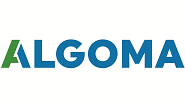Steel Mills

Algoma Sees 'New Paradigm' for Steel Prices, Stronger Plate Demand
Written by Michael Cowden
November 12, 2021
Algoma Steel posted record profits in its fiscal second quarter, and the Canadian flat-rolled steelmaker expects money to continue to pour in as high spot prices roll into 2022 contracts.
The Sault Ste Marie, Ontario-based company also thinks that the traditional relationship between sheet and plate prices will be restored as infrastructure spending increases demand for plate, company executives said.
![]()
Algoma said in material released with earnings data that “pricing has peaked.” But “optimism continues for steelmakers across North America. Strong demand in key end markets continues. And pricing remains at near record levels,” company CEO Michael McQuade said on the call.
Lead times are approximately six weeks, McQuade said. “We are just looking to clean up and finish up the end of December … and move into January.” Cold rolled lead times are “well beyond” six weeks, he said.
McQuade made the comments in Algoma’s first earnings call since going public last month.
A ‘New Paradigm’ for Steel Prices
Chief Financial Officer Rajat Marwah upped the ante when it came to bullishness on steel prices. “We believe that pricing will remain elevated for the foreseeable future,” he said.
His rationale: infrastructure spending, traditional Section 232 tariffs and quotas, new tariff-rate quotas (TRQs), and future carbon border adjustment mechanisms (CBAMs) will create “a new paradigm for steel prices.”
And infrastructure spending will result in higher plate prices, something that should carry outsized benefit to Algoma thanks to upgrades to its plate mills.
Algoma makes hot-rolled coil, cold-rolled coil and plate.
“Traditionally, hot rolled plate is priced higher than hot rolled coil. Today that relationship is inverted. However, with infrastructure spending, we believe the traditional relationship will return,” Marwah said.
A rule of thumb is that plate prices carry an approximately $200 per ton ($10 per cwt) premium over hot rolled coil. That’s because plate requires more processing and more time on the mill.
That has not been the case for the last year. Prices for both sheet and plate have risen sharply. But the gains in sheet have, to date, outstripped those in plate – although recent declines in sheet prices have resulted in the gap between sheet and plate narrowing.
Also on the price side, Algoma expects to benefit from current high spot prices as they roll into 2022 contracts.
Approximately two-thirds of the company’s sales are based on contract terms. Of that amount, about 10% are annual fixed-priced contracts. The balance are monthly or quarterly contracts that reflect spot market prices – such as those published by SMU parent company CRU – on a lag. In other words, high spot prices in the fourth quarter of this year will be reflected in high contract prices in the first quarter of 2022.
Also supportive of prices are inflation in everything from scrap and coal to natural gas and electricity. “All the commodities have gone up,” Marwah said. That will remain the case in the fourth quarter, but the situation will “normalize” in future quarters.
Scrap prices, for example, are expected to correct, and so too should natural gas prices in North America given the abundance of gas in the region. And while coal prices are in theory up 300%, the actual number is less because coal indices track the export market, and domestic supply contracts trade at a significant discount to that, he said.
Profits and Operations
All told, Algoma recorded net income of Canadian $288.2 million ($229.5 million) in its fiscal year 2022 second quarter compared to a loss of C$60 million ($47.8 million) in the year-ago quarter on revenue that rose 168% to C$1.01 billion ($804.3 million) over the same period.
The gains came thanks not only to higher steel prices but also to higher shipment volumes. Algoma shipped 587,340 tons in its fiscal second quarter, up 13.8% from 516,291 tons in the same quarter last year.
The company expects shipments of 590,000 to 610,000 tons in its fiscal third quarter and adjusted earnings before interest, taxes, depreciation and amortization (Ebitda) of $450 million.
Algoma’s fiscal year runs April 1 of this year to March 31 of next year.
On the operations side, company executives reiterated the benefits of switching from integrated steelmaking to producing steel via electric arc furnaces (EAFs).
Algoma does not think its current blast furnace and basic oxygen furnaces will be disrupted while construction is underway for its two new EAFs, which are expected to come online in 2024. That’s because the area where the furnaces are being installed does not overlap with its existing steelmaking footprint.
As for the blast furnaces and basic oxygen furnaces, those can be left intact and decommissioned or demolished “opportunistically” after the EAFs are up and running, the company said.
By Michael Cowden, Michael@SteelMarketUpdate.com

Michael Cowden
Read more from Michael CowdenLatest in Steel Mills

Algoma fires up EAF steelmaking with first arc
Algoma Steel reached a milestone in its transformation from blast furnace to electric arc furnace (EAF) steelmaking, with its Unit One EAF achieving its first steel production this week.

Nucor holds HR list price at $910/ton
Nucor is keeping its list price for spot hot-rolled coil unchanged after last week’s shortened holiday week.

Cliffs unveils new hydrogen-powered stainless line in Ohio
CEO Lourenco Goncalves, flanked by state leaders and union reps, touted the project as proof that US manufacturing is not only alive, but also advancing.

Cliffs idles Steelton, Riverdale, and Conshohocken operations
Cliffs has idled facilities in Riverdale, Ill., and Conshohocken and Steelton, Pa.

Radius loss narrows, volumes climb in ‘healthy’ West Coast market
Stronger steel demand in the Western US, rising scrap flows, and improved rolling mill utilization drove sequential gains for Portland, Ore.-based Radius Recycling.
